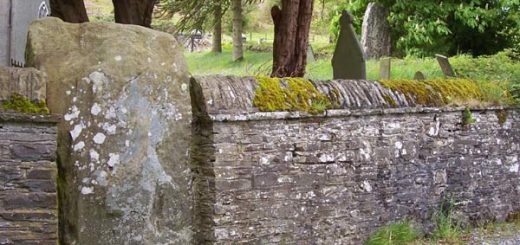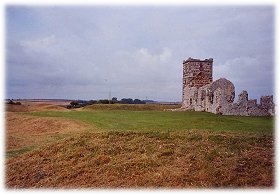Ballynoe Stone Circle
Ballynoe is a large stone circle dating from the Late Neolithic Period situated with superb views of the Mountains of Mourne to the South. Its position and size make it one of the most impressive stone circles in Ireland.
![Irishdeltaforce [CC BY-SA 3.0 (https://creativecommons.org/licenses/by-sa/3.0)], from Wikimedia Commons](http://www.mysteriousbritain.co.uk/wp/wp-content/uploads/2018/12/4_Ballynoe_Stone_Circle_1-300x225.jpg) Ballynoe is formed of a ring of around 60 rough boulders some 33.5M in diameter with stones up to 1.8M in height. The stones were erected close to each other like those at Castlerigg and Swinside in Cumbria, probably from Glacial erratics found in close proximity to the site. Two outlying uprights form an entrance to the site towards the North West of the circle, which is aligned to the setting sun at the Vernal Equinox.
Ballynoe is formed of a ring of around 60 rough boulders some 33.5M in diameter with stones up to 1.8M in height. The stones were erected close to each other like those at Castlerigg and Swinside in Cumbria, probably from Glacial erratics found in close proximity to the site. Two outlying uprights form an entrance to the site towards the North West of the circle, which is aligned to the setting sun at the Vernal Equinox.
As with many ancient sites Ballynoe was revered and re-used during its long history, in this case during the Bronze Age, when a burial mound was constructed within the main stone circle. The mound was finished with kerbstones and then surrounded by a half circle of upright stones. It was excavated in 1937 when it was found to contain several stone cists which in turn contained the remains of several cremations.
Aubrey Burl in his book ‘Rings of Stone ‘ suggests that Ballynoe may have direct links with Swinside Stone Circle in Cumbria. They are very similar in construction and size, and there may have been a sea route from Dundrum Bay (2 miles from Ballynoe) to Duddo Sands on the West Coast of Cumbria, which must have been an arduous undertaking 5000 years ago. The nature of this relationship is speculative and may never be understood, but may have involved the trade of artefacts such as stone axes, which at one time were manufactured at Langdale in Cumbria. These axes have been found at sites throughout Britain and Ireland suggesting a fairly well developed network of trading.
As with all ancient circles of stone we can only take an educated guess at their purpose, although a specific entrance and the large internal space suggests its use in ritual activity of some sort (which may seem a bit vague and wide ranging but there is little evidence to suggest specifics from contemporary archaeological evidence). While many stone circles may have been used for astronomical purposes, the outlying stones at Ballynoe (apart from the entrance) are set too low in the outlying landscape to be used as sights for sky gazing – although who knows, perhaps wooden staves were used at these specific points.
Ballynoe is situated to the North of Dundrum Bay, County Down




Recent Comments